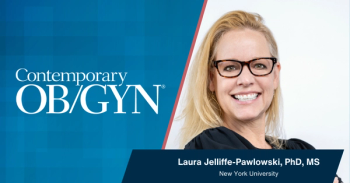
More quality criteria needed for obstetric care
A recent population-based study showed a lack of correlation between Joint Commission indicators of elective delivery at 39 weeks’ gestation and cesarean delivery and rates of maternal and neonatal complications in deliveries at New York City hospitals in 2010.
A recent population-based
Led by researchers at the Icahn School of Medicine at Mount Sinai, the observational study used linked New York City discharge and birth certificate data sets from 2010. Delivery hospitalizations were identified and 2 Joint Commission obstetric
Of 103,416 neonates without anomalies, 8057 experienced neonatal morbidity (7.8%), whereas severe maternal morbidity was identified in 2372 of 115,742 deliveries (2.4%). Among 41 hospitals, the rates for elective deliveries performed before the 39th week of gestation ranged from 15.5 to 41.9 per 100 deliveries. In low-risk mothers, the rates of cesarean deliveries were 11.7 to 39.3 per 100. Rates of neonatal morbidity per 100 births ranged from 3.1 to 21.3 and rates of maternal morbidity per 100 deliveries ranged from 0.9 to 5.7.
Overall, the maternal quality indicators elective delivery prior to 39 weeks’ gestation and cesarean deliveries to low-risk mothers had little association with severe maternal complications (RR, 1.00; 95% CI, 0.98-1.02 and RR, 0.99; 95% CI, 0.96-1.01, respectively) or neonatal morbidity (risk ratio [RR], 0.99; 95% confidence interval [CI], 0.97-1.01 and RR, 1.01; 95% CI, 0.99-1.03, respectively).
The investigators concluded that the 2 quality indicators examined were not associated with lower morbidity. They believe that the findings show the need for a larger number of obstetric quality measurements, such as whether protocols for hemorrhage and
To get weekly advice for today's Ob/Gyn,
Newsletter
Get the latest clinical updates, case studies, and expert commentary in obstetric and gynecologic care. Sign up now to stay informed.











